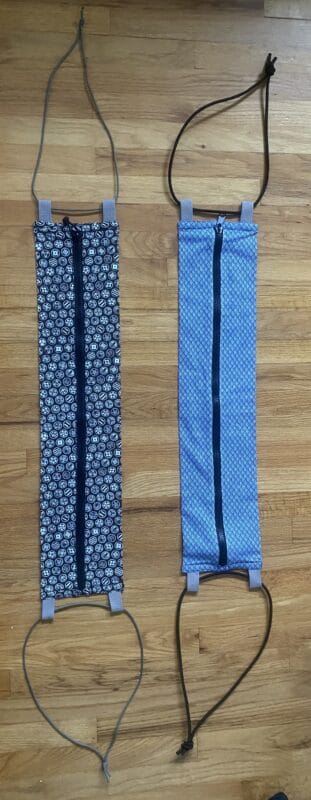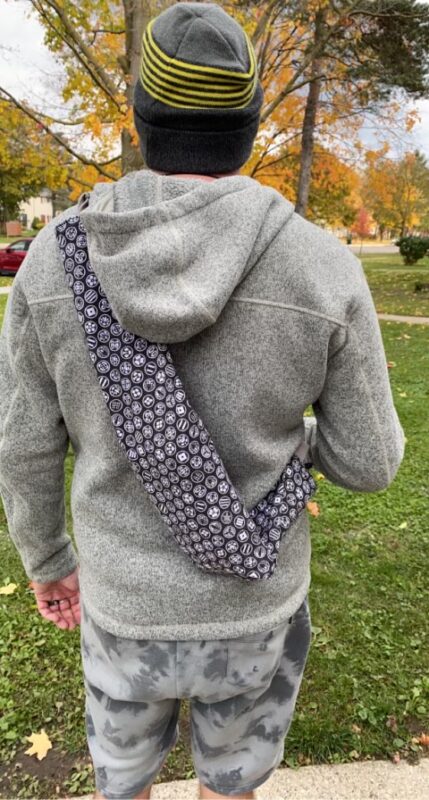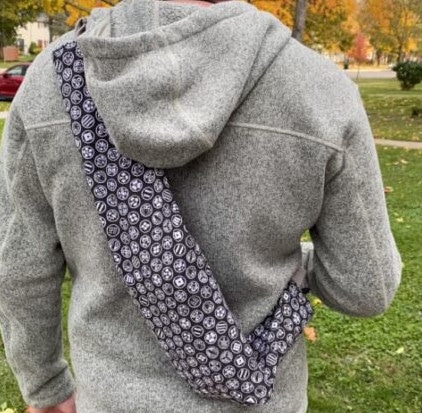I’m looking at a Topo Designs backpack commissioned for Atomic Object’s 20th Anniversary, and it’s extremely cool. It has two external pockets that fit my Nalgenes perfectly. It has one large compartment with a partition that fits my Macbook Pro like it was made for it. In addition, it has a separate top compartment as well as a small bottom pocket designed (to my eye) for smaller/thin objects. I consider myself a product nerd, and I don’t think I could design a better bag for a software delivery consultant like myself.
So, in pursuit of a backpack that would be the minimum viable product (MVP), I decided to make something worse.
In the past I have purchased bags specifically for:
- Camping/Minimal equipment camping
- Day-hiking
- Air travel
- Urban commuting
- First aid
- Weekend wandering
I purchased all of these bags based on a perceived need or (more often than I’d like to admit) based on a hypothetical need. “If I only had something that filled X role…” I’d say to myself. The expected outcome was a shot of dopamine and the feeling that I’d finally be complete. My life would fall into order if I just made this one last monetary offering on the altar of consumerism. This time, I tried to do the exact opposite of that urge. I wanted to see what I could build that would not be enough bag.
Parkinson’s Law and My Bag
Why would someone want something that is not enough? The answer for me is, I’ve frequently gotten way too much bag. Parkinson’s Law, the belief that work will generally expand to fill the time allotted for its completion, can also apply to backpacks. Said another way, if you carry a 45-liter bag, you’re likely to fill it with 45 liters’ worth of things you can convince yourself are important. Whether you need all that cargo or not is between you and your lumbar spine.
By deliberately making something that I thought would be too small for most of my Everyday Day Carry (EDC), I could hypothesize about what I do need.
A First Iteration
I started with furoshiki, a traditional Japanese towel/length of fabric. They are often used for wrapping gifts (think loosely wrapping around a wine bottle you’re bringing to a dinner party for that little extra flair). I hypothesized that, when folded over into a tube shape, I’d get something that had more space than a fanny pack, but less space than any other backpack I own. (I consider fanny packs their own species and not in the backpack category.) Not really having anything better than a hunch, I hit the order button a few times for the following:
- Three differently patterned furoshiki of the same size
- A small roll of one-inch cotton strap/webbing material
- Two complete 30-inch #10 heavy-duty double pull tab zippers
I took all the above to my tailor who, though a bit puzzled, sewed two of the furoshiki into individual tubes. The end result was a pair of sacs with a zipper on it that you could fit a bottle of wine in. First iteration success! I now had to consider that a closed fabric tube does not meet the definition of a backpack. I was lacking the means to secure the tube to my back. It was time to go shopping in my junk drawer for a solution.
In my life’s journey, I’ve often found field expedient repair kits come in handy. I have cordage in far too many types and styles to be practical. I narrowed my search down to 550 parachute cord and some quarter-inch elastic webbing. While 550 cord was the simplest option, I committed one of the cardinal sins of product design. I went with a more complicated and fancier solution before doing any testing. After all, I’m experienced! I’ve been wearing backpacks for 35 years! I’m a product manager (and a truly fallible human)!
After looping my elastic cord through the web tabs, I now had something one step above a minimal viable product of a backpack. In the software world, you could say I applied “gold-plating” to my shoulder strap design.

Gold Plating?
For the last decade, I’ve been coaching clients to not over-engineer their first product offering. I’ve deployed all of the cliches:
“You should be embarrassed by your first shippable increment!”
“Get something out there in the wild that solves a problem and then listen to your users’ feedback for future iterations!”
“What your end users are telling you is more valuable than what your competition is building!”
I wish I could put some of those previous frustrations I had with my clients on a plate and serve it to myself. That’s because I did the same thing they were doing. I thought I had a good idea and went with something more complicated than I needed out of the gate.
How was I rewarded for my hubris? With a backpack that bounced around on my back like the straps were made out of rolled and pre-chewed bubblegum. Even with a notebook and a bottle of water in my new pack, the giant spongy webbing felt ungainly. Plus, the stretch of the elastic threw off my proprioception. I constantly felt like the bag was falling off my shoulders when the straps were simply expanding and contracting as their material was designed to do.
A Second Iteration
I was embarrassed and knew immediately that I had gold-plated like a newbie. I decided to immortalize this first version and use the second version to iterate on. So, I reached for my 550 paracord and looped it through the fabric tabs. Immediately it felt better, and by better I mean, like a backpack.
I loaded my MVP backpack with:
- A pair of scrubs
- A water bottle
- A notebook and pen
This packing list is everything I need for my second job, where I work in a laboratory. The pack carried everything well. The paracord straps, which I initially thought would be too thin and create hotspots on my shoulders, felt great and were comfortable for hours’ worth of wear.
At the end of my second iteration (and some very human mistakes), I had made a product that, if I were to remove a single component, ceases to function. This meets the definition of minimum viable product. I also met my initial design criteria. This bag is not enough for my daily Monday to Friday needs. It doesn’t fit my laptop or my portable trauma kit (that I carry with me most days as a hanger-on from my EMS days). It does fit a very narrow role, “Second job, after work bag,” and that’s good enough for me.

Lesson in Minimum Viable Product Learned
What did I learn from this? To have more compassion for my clients. And, I learned to always test your assumptions in the real world and not only on the mental drawing board.

